Intel Core i9-13900K and i5-13600K Review: Raptor Lake Brings More Bite
by Gavin Bonshor on October 20, 2022 9:00 AM ESTGaming Performance: iGPU
Despite updating the main bulk of our CPU test suite for 2023 and beyond, we've not had a chance to test every integrated graphics chip in our stack of CPUs. As a result of this, we've included limited results for our iGPU-based gaming tests, although it is more than enough to get to grips with improvements in Raptor Lake performance.
As a reminder, We are using DDR5 memory on the Core i9-13900K, the Core i5-13600K as well as Intel's 12th Gen (Alder Lake) processors at the following settings:
- DDR5-5600B CL46 - Intel 13th Gen
- DDR5-4800 (B) CL40 - Intel 12th Gen
All other CPUs such as Ryzen 5000 and 3000 APUs were tested at the relevant JEDEC settings as per the processor's individual memory support with DDR4.
Final Fantasy 14
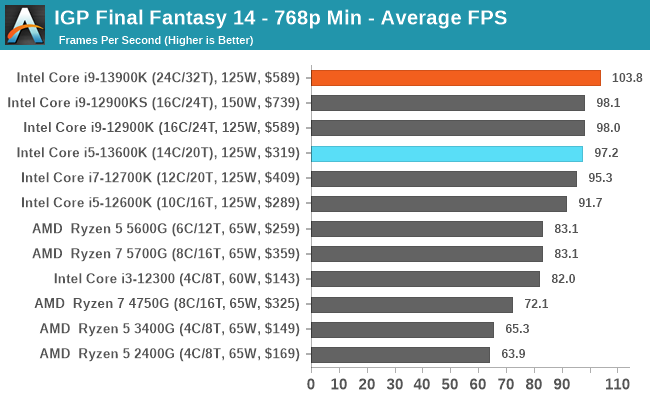
World of Tanks
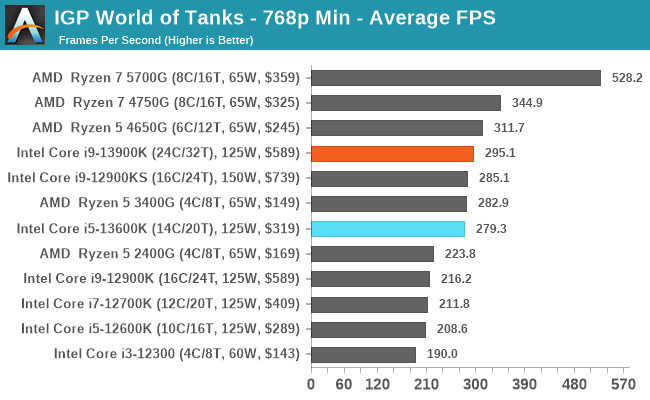
Borderlands 3
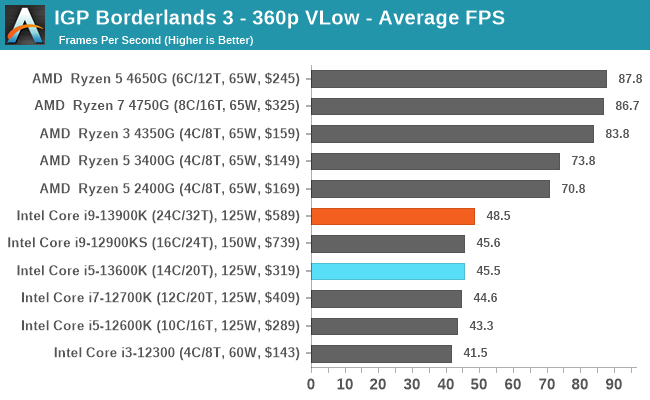
Far Cry 5
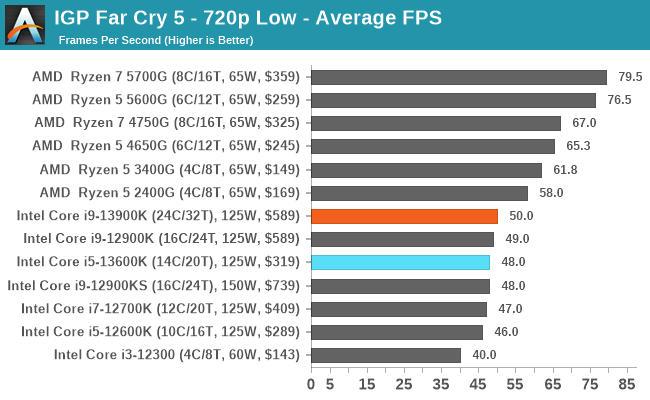
Grand Theft Auto V
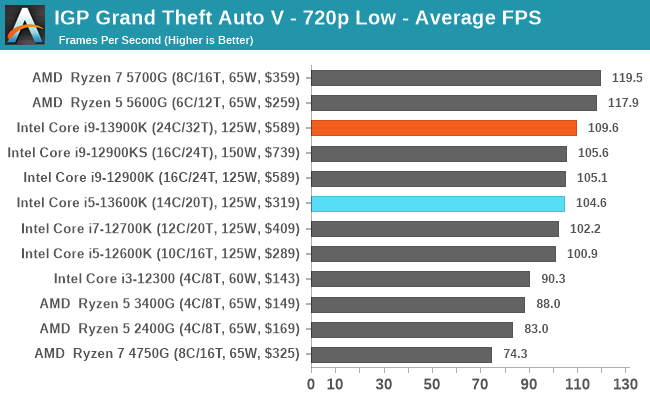
Strange Brigade (DirectX 12)
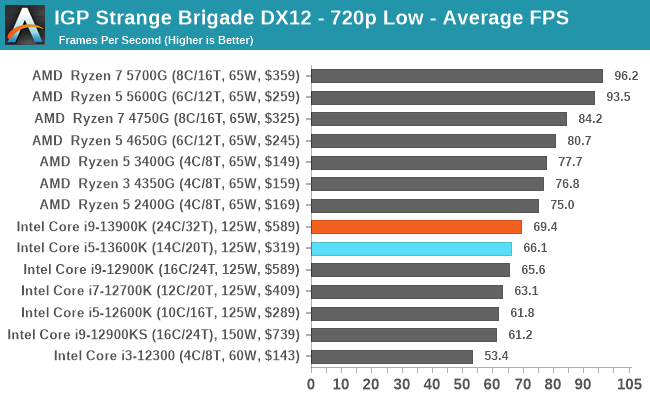
For both 13th and 12th Gen Core series processors, Intel is using the Xe-LP based 770 HD graphics processor. This means the overall integrated graphics performance between the two is almost identical.
In our integrated (iGPU) graphics testing, the power of Intel's Raptor Cove cores combined with more E-cores does show a distinct, but negligable advantage when using Intel's 770 HD graphics. This advantage is clear in Final Fantasy 14 where more cores and more CPU power are advantageous for performance.
Looking at the iGPU performance of both the Core i9-13900K and Core i5-13600K in our other tests, the Core i9 performs best out of Intel's chips, but in games where graphical power is required, the AMD 5000 series APUs do come out best. The Core i5-13600K also performs marginally worse than the Intel Core i9 12th Gen series, but this is to be expected.










169 Comments
View All Comments
OreoCookie - Tuesday, October 25, 2022 - link
Yes, TDP has a meaning, and technically, neither company is using it correctly. Back in the good-ol’ days when TDP was really max power under load, it easily allowed you to spec a cooler. Clock boosts were meant to be temporary, transient states so that *on average*, you’d still lie within the thermal budget of the cooler. Obviously, we are well past that.So yes, AMD is playing it a bit loose (+31 %). But Intel is playing it ridiculous: the i9’s max power (as tested here) is 2.7x (!) their “TDP”. Reply
shaolin95 - Thursday, October 20, 2022 - link
AMD does the same thing. dont be a fanboy Replyyh125d - Thursday, October 20, 2022 - link
If you're equating AMD going ~50w over TDP to intel going 210w over TDP, you're being the fanboy. ReplyYojimbo - Friday, October 21, 2022 - link
AMD's turbo clocking is more than 50W. ReplyYojimbo - Friday, October 21, 2022 - link
i checked and it's 60 W. That doesn't make AMD "less dishonest”. Neither company are being dishonest. It means AMD does not intend their desktop products to be used in lower power products. If you want to design a product around a Ryzen 7950X you need a 170 W cooling solution. Whereas you can put an i9 13900K in a product that can only dissipate 125 W. That's the difference between the two processors in terms if the TDPs. That's what TDP means. ReplyTruebilly - Friday, October 21, 2022 - link
I'd like to see someone run that 13900k with 120mm rad ReplyWrs - Friday, October 21, 2022 - link
I mean, it works. The processor automatically steps down the v/f curve and doesn't hiccup with a puny cooler good for 140'ish W. I tested a 12900k with a low-profile AXP-200 from my Skylake days. Performance wasn't bad, over 4GHz all 16 cores. I left all the OC settings on, or else stock E-cores would be 3.9GHz. Replynandnandnand - Thursday, October 20, 2022 - link
Go look at some efficiency curves for the 7950X and 13900K, for example at 19:00 in Hardware Unboxed's review: https://www.youtube.com/watch?v=P40gp_DJk5E ReplyYojimbo - Friday, October 21, 2022 - link
none of the companies "do” anything here. The "doing" is by the people who, though they are ignorant, write seething rants in comment sections damning the companies. Replybji - Friday, October 21, 2022 - link
This issue would be a lot less contentious if technical sites like Anandtech actually used their expertise to curate information presented. They just shouldn't even show TDP as it's simply not relevant to the end users who are reading the articles. They should have some standard benchmark they run to determine peak and maximum sustained power draws and show ONLY those values in any charts. Reply